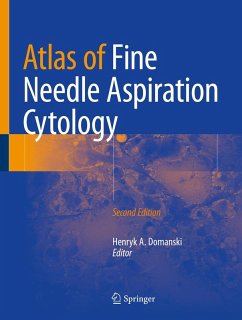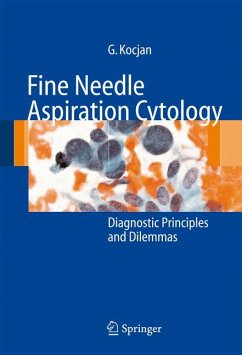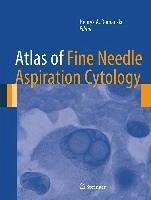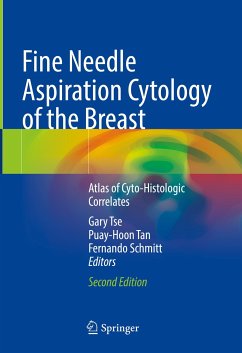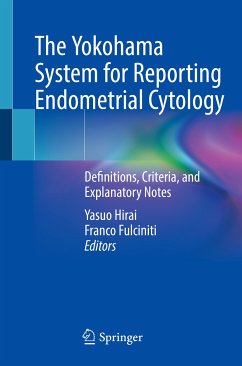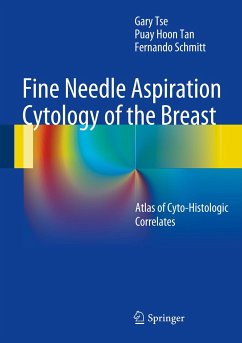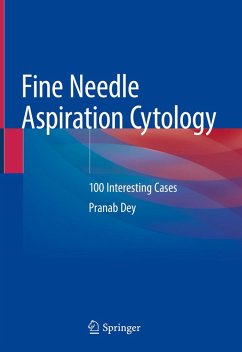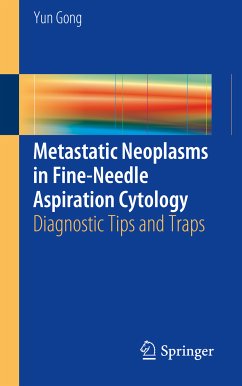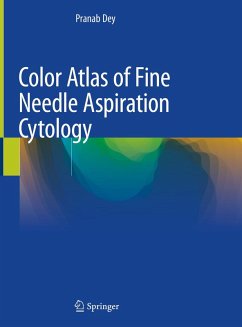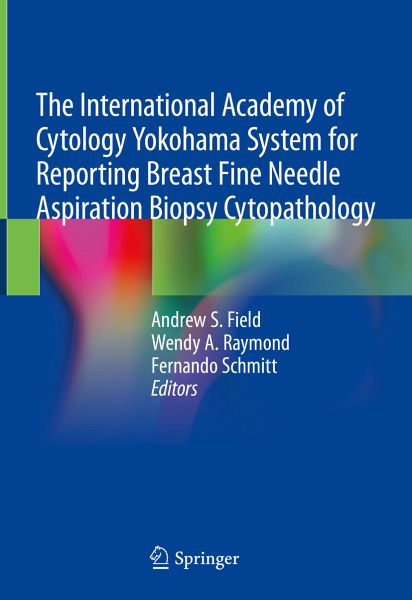
The International Academy of Cytology Yokohama System for Reporting Breast Fine Needle Aspiration Biopsy Cytopathology (eBook, PDF)
Versandkostenfrei!
Sofort per Download lieferbar
40,95 €
inkl. MwSt.
Weitere Ausgaben:

PAYBACK Punkte
20 °P sammeln!
This text describes a system of reporting breast fine needle aspiration biopsy that uses five clearly defined categories, each described by a specific term and each with a specific risk of malignancy. The five categories are insufficient/inadequate, benign, atypical, suspicious of malignancy and malignant. Each category has a risk of malignancy and is linked to management recommendations, which include several options because it is recognized that diagnostic infrastructure, such as the availability of core needle biopsy and ultrasound guidance, vary between developed and low and middle income ...
This text describes a system of reporting breast fine needle aspiration biopsy that uses five clearly defined categories, each described by a specific term and each with a specific risk of malignancy. The five categories are insufficient/inadequate, benign, atypical, suspicious of malignancy and malignant. Each category has a risk of malignancy and is linked to management recommendations, which include several options because it is recognized that diagnostic infrastructure, such as the availability of core needle biopsy and ultrasound guidance, vary between developed and low and middle income countries. This text includes key diagnostic cytological criteria for each of the many lesions and tumors found in the breast. The cytopathology of specific lesions is illustrated with high quality photomicrographs with clear figure descriptions. Chapters also discuss current and potential future ancillary tests, liquid based cytology, nipple cytology and management. An additional chapter provides an overview of an approach to the diagnosis of direct smears of breast fine needle aspiration biopsies.
The International Academy of Cytology Yokohama System for Reporting Breast Fine Needle Aspiration Biopsy Cytopathology provides a clear logical approach to the diagnosis and categorization of breast lesions by FNAB cytology, and aims to facilitate communication with breast clinicians, further research into breast cytopathology and related molecular pathology, and improve patient care.
Dieser Download kann aus rechtlichen Gründen nur mit Rechnungsadresse in A, B, BG, CY, CZ, D, DK, EW, E, FIN, F, GR, HR, H, IRL, I, LT, L, LR, M, NL, PL, P, R, S, SLO, SK ausgeliefert werden.



